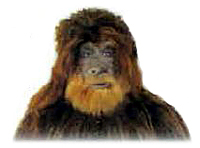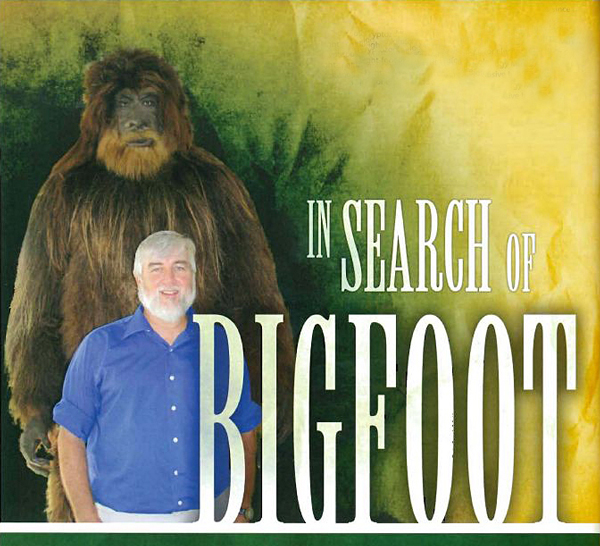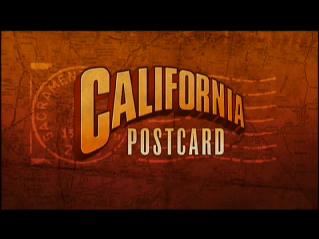Media Article – Jackson County, Illinois – # 31
December 2010
In Search Of Bigfoot
by Bonnie Marx
Southern Alumni
Mysteries of nature – loch monsters, chupacabras, and Bigfoot – have long populated Loren Coleman’s world. He is acknowledged as the current living American researcher and writer who most popularized cryptozoology, which is basically the biological study of “hidden animals.” But don’t expect this author of more than 6,000 columns and articles to blindly defend the creatures and critters that occasionally pop up in the news as “monsters.” Instead, he calls himself an “open-minded skeptic.”
The reasons people choose to attend Southern are myriad, but the incentive for Loren Coleman ’76 is likely unique. Now one of the world’s preeminent cryptozoologists, he says “I picked SIU because of reports and folklore of black panthers and hairy apes in the southern swamps of the area.”
Mysteries of nature – loch monsters, chupracabras, Bigfoot, and such – have populated Coleman’s world since his age was barely in the double digits. Within a year or two he was doing fieldwork and investigations on his own, traveling and trekking extensively in pursuit of crtyptozoological mysteries.
Now, nearly five decades later, Coleman is acknowledged as the current living American researcher and writer who most popularized cryptozoology in the late 20th and early 21st centuries. Most days he can be found at his International Ctryptozoology Museum in Portland, Maine, which has served as the setting for several documentary television programs’ interviews of Coleman regardins his books and continuing research.
For those unfamiliar with the term cryptozoology, it comes from the Greek “kryptos,” meaning “hidden” and zoology, the biological study of animals, giving it the literal mean “study of hidden animals.”
But don’t expect Coleman, who has written more than 6,000 columns and articles as well as more than 30 books on the subject, to blindly defent the creatures and critters that occasionally pop up in the news as “monsters”. Instead, he calls himself an “open-minded skeptic.”
It’s not just about the so-called monsters, like Bigfoot or Mothman. “There are new animals being discovered every day, like the snub-nosed monkey of Asia,” he says. An editor of the Skeptical Inquirer said that “among monster hunters, Loren’s one of the more reputable, but I’m not convinced that what cryptozoologists seek is actually out there.”
But Coleman is and his credibility makes him “the go-to guy for a lot of media trying not to be sensationalistic,” he says. Two days before his interview with Southern Alumni, National Geographic came to call. The Christian Science Monitor has visited three times since last spring. “They see that cyptozoology is a lot more grounded than ever.”
At Southern, “I majored in anthropology, minored in zoology, and did some summer field work in archaeology”, Coleman says. he also found it compelling that in his first year at Southern he was assigned to Allen Hall, name for John W.Allen, noted historian and folklorist who for several years was director of the University Museum. “I tuned in on that fact right away.”
(Coleman’s official graduation year from Southern, 1976, is a bit misleading. In 1969, he was a senior, two courses away from graduation, when the University closed because of student unrest. His degree was granted in 1976 after he petitioned to get credit for one of the books he’d written. His first book came out in 1969.)
Despite his passion for the subject, Coleman knew that cryptozoology wasn’t going to pay the bills. His career focused on social service, social work, and even public policy. His first job in the mental health field, he says, was working at the outdoor laboratories at Southern.
Coleman spent 17 years working in residential treatment centers before earning a degree in psychiatric social work at Simmons College in Boston, and also has done doctoral coursework in social anthropology and sociology. For another 20 years, he was a professor and researcher at universities in New England. He continues work as a consultant for the Maine Youth Suicide Program and has been called on for statements in the aftermath of school shootings and how best to respond to the problem.
Coleman says he “always cared about the kids (his social work) but teaching was very much a way to fund my other interests . . . . I needed to get out of research and get to cryptozoology. I also wanted to see my boys grow up and writing and consulting more could make the life I wanted to make.”
The SIU graduate’s own fascination with unclassified zoological enigmas came in the early 1960s when he first heard accounts of the Himalayan Yeti. But he quickly became disillusioned by modern science’s dismissal of the creatures and went to work establishing relationships with some of the most esteemed crypto-investigators.
During his earliest field investigations, Coleman was one of the few serious researchers to actually bear witness to the “Minnesota Iceman” carcass and he was one of the first investigators on the scene following the notorious “Dover Demon” encounters of 1977.
Although he was living back in his hometown of Decatur, Ill., in the early 1970s, he returned to the area when reports of the Big Muddy Monster started coming in. “The Big Muddy Monster was a big deal,” he remembers. “In the Decatur area and all the way down to Carbondale, people were reporting seeing a Bigfoot. There was the Farmer City Monster, who some said had a head the size of a steering wheel, and many different little incidents. I had the sense Illinois would explode with some big story.”
In 2003, Coleman opened his International Cryptozoology Museum in four rooms of his house, opening it only serious researchers. In 2009, the museum went public, moving into a storefront at the rear of a book store in Portland, Maine. In addition to the 8-foot-tall Bigfoot likeness, the museum holds about 2, 000 other items. He also writes for the blog Cryptomundo (www.cryptomundo.com).
Mysteries of nature populate Loren Coleman’s world but you won’t hear him use the work “believe.”
“Belief is the providence of religion,” says Coleman. “I distrust “belivers,” who are just as dangerous as the blind debunkers.”
This is one of more than 30 books Coleman has written on the subject. He’s also penned more than 6,000 columns and articles.






